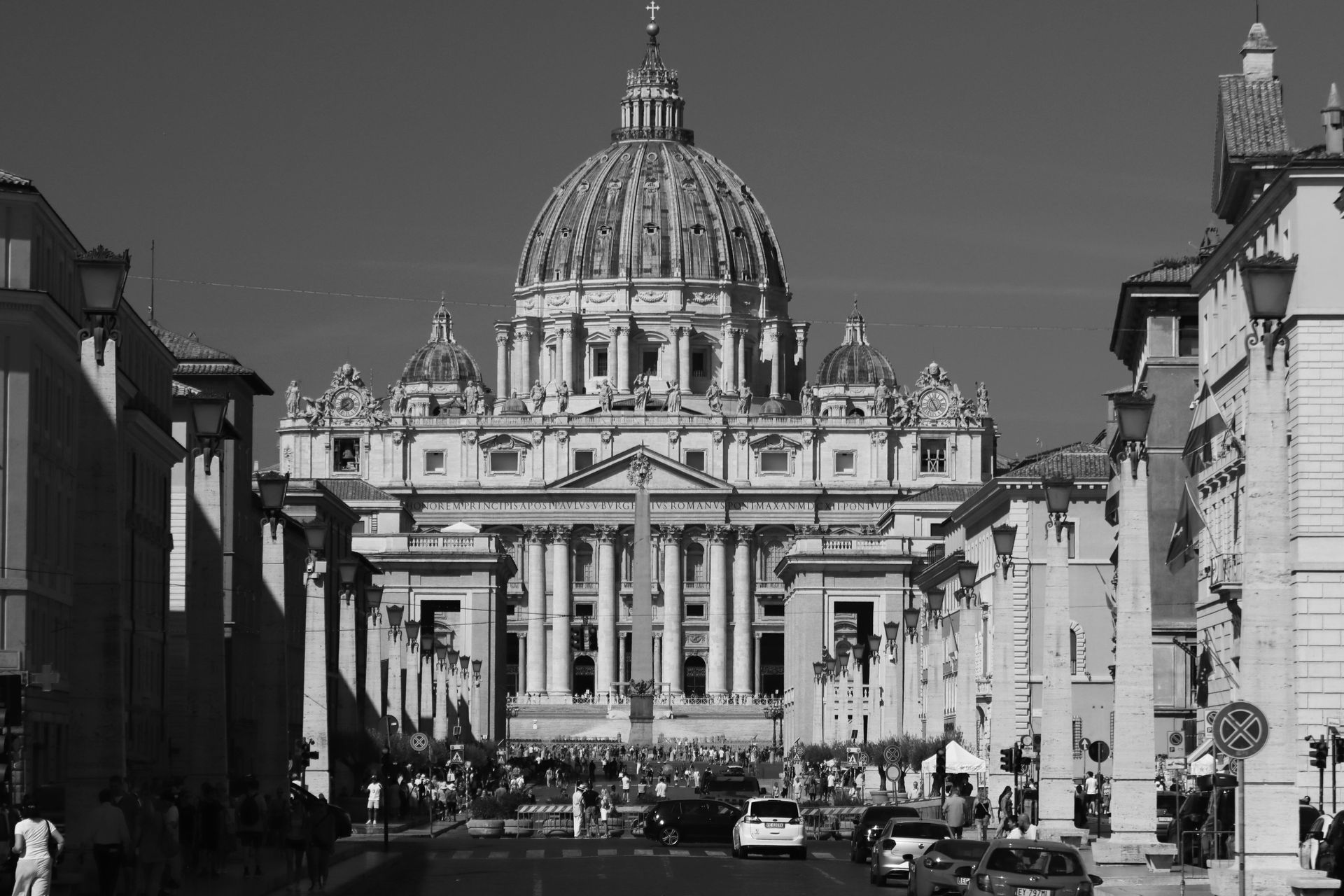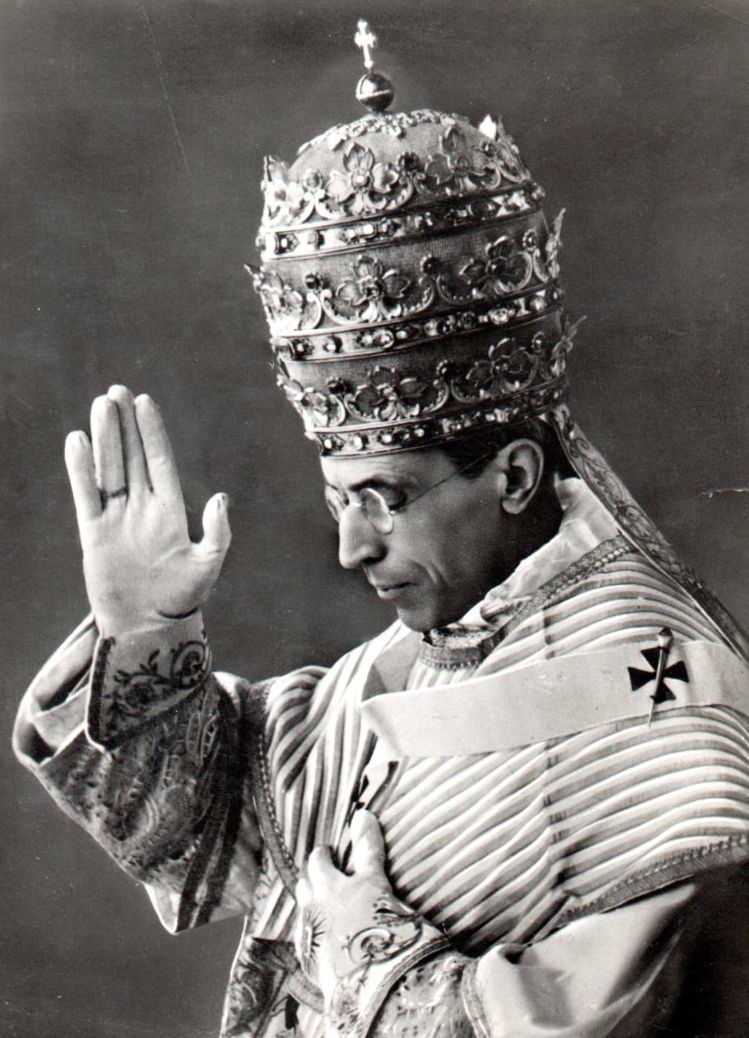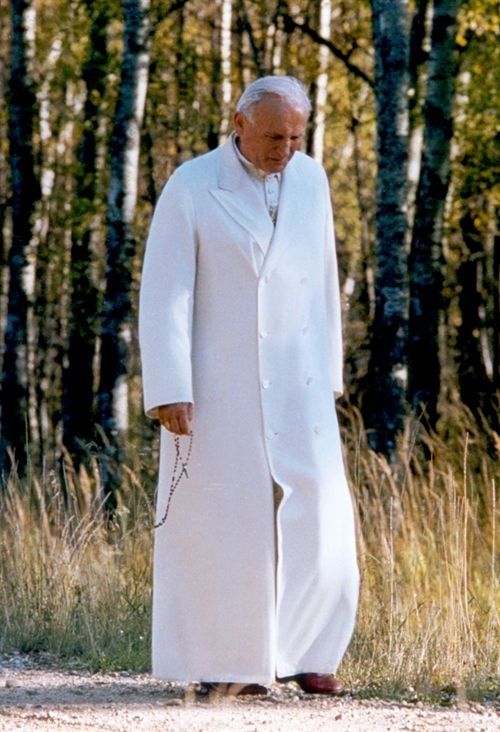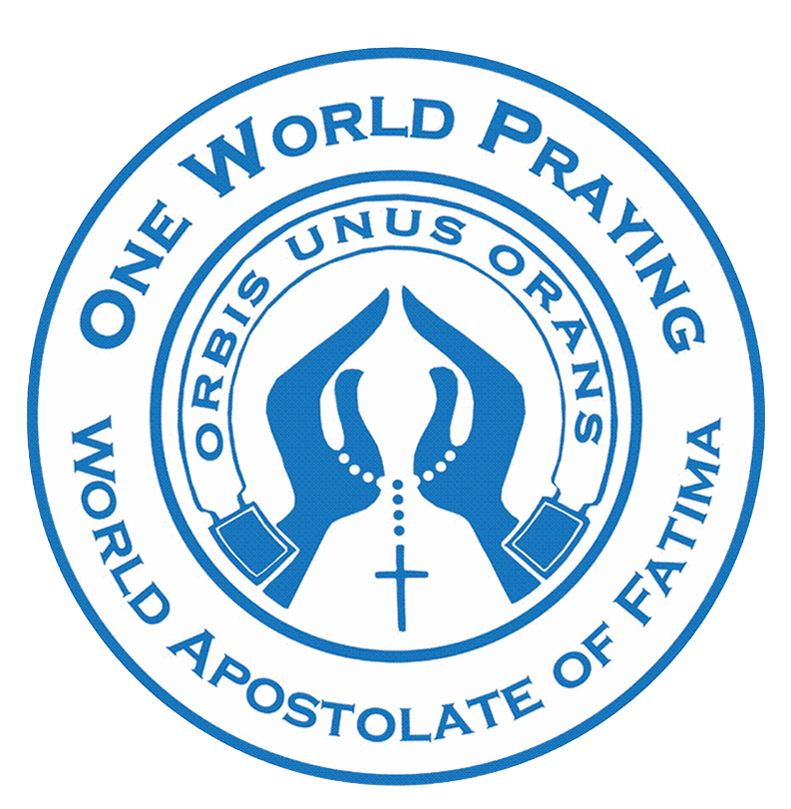Why Fatima is Important
Pope St. John Paul II, at the Beatification of Francisco and Jacinta at Fatima, on 13 May 2000, said: “A message of conversion and hope has spread from Fatima which is the true Gospel of Christ presented anew to our generation.”
His successor, Benedict XVI, said at Fatima, on 13th May 2010, that, “We would be mistaken to think that the prophetic mission of Fatima is complete.”
“Following the example of Pope St. John Paul II, a great devotee of Our Lady of Fatima, let us listen attentively to the Mother of God and ask for peace for the world” — Pope Francis
THE MESSAGE OF FATIMA REAFFIRMS THE FAITH OF THE CHURCH
The former Bishop of Leiria-Fatima, Dom Alberto Amaral, made the following pronouncement on the message of Fatima, which defines its place and significance for the faithful in the life of the Church:
“To know the message is to know the Gospel, to live the message is to live the Gospel. To accept the message is to accept Revelation as interpreted by the authentic Magisterium of the Church. There is almost no article of the Faith of the Church which is not reaffirmed, explicitly or implicitly, in the message of Fatima, understanding this in its widest and deepest sense.”
(+ Alberto Cosme do Amaral, Bishop of Leiria-Fatima, 13 August 1991, writing in the Prologue to Francisco of Fatima by Fernando Leite, SJ, in the English translation published in 1999. Dom Alberto was bishop of Leiria-Fatima from 1972 to 1993).
The message of Fatima reaffirms the faith of the church
The former Bishop of Leiria-Fatima, Dom Alberto Amaral, made the following pronouncement on the message of Fatima, which defines its place and significance for the faithful in the life of the Church:
“To know the message is to know the Gospel, to live the message is to live the Gospel. To accept the message is to accept Revelation as interpreted by the authentic Magisterium of the Church. There is almost no article of the Faith of the Church which is not reaffirmed, explicitly or implicitly, in the message of Fatima, understanding this in its widest and deepest sense.”
(+ Alberto Cosme do Amaral, Bishop of Leiria-Fatima, 13 August 1991, writing in the Prologue to Francisco of Fatima by Fernando Leite, SJ, in the English translation published in 1999. Dom Alberto was bishop of Leiria-Fatima from 1972 to 1993).
The resurrection of the Church in Portugal after 1917
One of the leaders of the violently anti-Catholic Republican government, which had overthrown the monarchy in 1908, boasted that within two generations they would eliminate Catholicism from Portugal. When on 13 October 1917 the vast crowd of some 70,000 people witnessed the stupendous miracle of the sun, they then knew beyond a shadow of doubt that Our Lady had truly been appearing there, and so they willingly responded to her requests for penance and especially for the daily recitation of the Rosary. In response to the people’s faith which led to continuous and ever-increasing streams of pilgrims to the incipient shrine, Our Lady worked many miracles of healing and of conversion, there was a steady growth in devotion to our Lady of Fatima throughout Portugal, and thus within one generation or about 25 years, Portugal witnessed not the elimination of Catholicism but on the contrary the remarkable resurrection of the Church.
The resurrection of the Church in Russia after the collapse of the Soviet Union
The message of Fatima is important because of its direct relation to the history of the 20th century, tormented by the spirit of revolt against God, and this has been clearly demonstrated by the huge changes that have taken place in Russia and its former satellites as a result of Pope John Paul II’s fulfilment of Our Lady’s request for its consecration on 25 March 1984. Changes inside Russia began soon afterwards, and in due course the former Soviet Union dissolved itself out of existence on 25 December 1991, the bitter persecution that the Church had endured in Russia since 1917 ceased, and the threat of a nuclear war provoked by the aggressive Communist tactics of the former Soviet Union has receded.
Having recovered its freedom, the Church is witnessing an unprecedented religious revival in the countries of Russia, Ukraine, Belorussia and Moldavia, where in the past 25 years the Russian Orthodox Church has built or restored from ruins more than 25,000 churches, and opened more than 50 theological institutes and 800 monasteries, which have been filled with monks and nuns. This testimony comes from Russian Orthodox Metropolitan, Hilarion Alfeyev, at an address he gave in South Korea on 1 November 2013 (Inside the Vatican, Dec 2013, p. 40).
Fatima - the response from Heaven to the revolt against God
The apparitions of Our Lady at Fatima occurred just as the atheistic Communist Revolution was about to seize power in Russia in October 1917, during World War I. In answer to the gravity of the threat posed to the Church by the revolt against God—which has subsequently penetrated the West and throughout the world in the form of materialism, secularism, the “dictatorship of relativism” denounced by Benedict XVI, and the “culture of death” against which Bl Pope John Paul II warned—Mary appeared at Fatima working unprecedented supernatural manifestations of God’s infinite love and mercy, and asked people to repent and not to “offend the Lord our God any more, because He is already so much offended”.
As Bl John Paul II said in his homily at Fatima on 13 May 1982, “the Mother who desires everyone’s salvation, cannot keep silence on what undermines the very bases of their salvation”. In an age when the very existence of God has been questioned as a delusion and Christian teaching and moral principles have come to be regarded as irrelevant in the public domain, the existence and presence of God is strongly re-affirmed at Fatima through His Mother to an extent that has not been seen before.
And indeed, Fatima is the greatest in a series of Marian apparitions which have played a large part in the major Catholic renewals of recent centuries, including Guadalupe in Mexico in 1531, Rue du Bac in Paris, in 1830, and La Salette and Lourdes in France, in 1846 and 1858 respectively.
A Message given through the family for the family
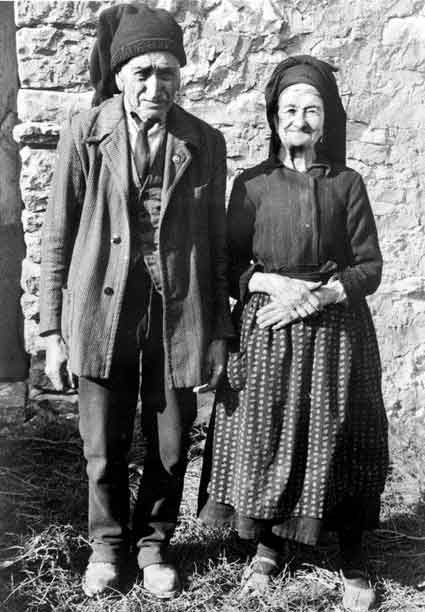
Meanwhile the Beatification of Francisco and Jacinta by Pope John Paul II on 13 May 2000, has opened an important new understanding of the contemporary relevance of the message for the Church, by focusing attention on the role of the family. AtFatima the holy Mother of God chose three very young and uneducated children of devout Catholic parents to receive a message that is of great significance for the Church and the world, as the popes have recognised, and the reason for Our Lady’s choice is only now beginning to become fully apparent.
As Pope Benedict XVI said on his visit to Fatima in May 2010, Our Lady was “the teacher who introduced the little seers to a deep knowledge of the love of the Blessed Trinity and led them to savour God himself as the most beautiful reality of human existence. This experience of grace made them fall in love with God in Jesus”. It is here in this encounter experienced by the shepherd children that one finds the centre and meaning of Our Lady’s apparitions—to proclaim the true and beautiful reality of God’s presence to the world, which increasingly denies and rejects Him, through the message of His Mother.
Despite being so young, the lives of the seers changed radically after their encounter with the beautiful Lady from heaven, and in due course Francisco and Jacinta were beatified because, after a minute examination of their lives, it was found that they had became models of heroic virtue through their exemplary fidelity and commitment in responding to Our Lady’s requests.
All three seers were the youngest children of their family, and this is the first time in the history of the Church that such young children have been beatified who were not martyred by shedding their blood for the Faith. By their beatification, the Church has proclaimed that living Our Lady’s message according to their example is an assured path of personal sanctification for children and adults alike. When a second miracle of healing is worked through their intercession, they will then be proclaimed the first child saints in the history of the Church who did not die as martyrs.
Moreover, the message itself consists of important elements, in particular daily recitation of the Rosary, which will strengthen the faith of families, and this development has come providentially at a moment when Christian family life is experiencing serious threats from an increasingly intolerant secularised society.
KEY THEMES TO SUPPORT THE MESSAGE OF FATIMA
FATIMA AFTER THE APPARITIONS
Meanwhile, work on the construction of the Capelinha, the Chapel of Apparitions, began on 28 April 1919 and was completed on 15 June; the first Mass was celebrated there on 13 October 1921. The pedestal on which the image of Our Lady stands in the Capelinha marks the exact spot where the little holm oak grew on which Our Lady appeared. In May 1922, Bishop Jose Correia da Silva of Leiria-Fatima, named a commission of enquiry to analyse the facts surrounding the Fatima phenomenon “with strictness and impartiality”.
On 10 December 1925, Sr Lucia, who had become a postulant with the Dorothean Sisters, was at their convent in Pontevedra, Spain, when she saw another apparition, this time of Mary with the Child Jesus. Mary told Lucia that she promised all the graces necessary for salvation to those who, on the first Saturday of five consecutive months, confessed, received Holy Communion, recited five decades of the rosary, and meditated on the rosary for fifteen minutes, all with the intention of making reparation to her Immaculate Heart.
Meanwhile, on 13 January 1924, Mass was celebrated for the first time inside the Capelinha, while on 26 June 1927, the bishop presided for the first time at an official event—the inauguration of the 14 kilometre Way of the Cross to the Cova da Iria, where he celebrated Mass in the presence of 400 pilgrims. Building work on he Basilica of Our Lady of the Rosary of Fatima was begun in 1928, and it was consecrated on 7 October 1953. It has 15 altars dedicated to the 15 mysteries of the Rosary. The bodies of Jacinta and Francisco were moved to their present positions, to the left and right of the main altar, in the early 1950s, and Sr Lucia’s body was interred in the Basilica in 2008 next to Jacinta’s. The mortal remains of Bishop Correia da Silva, who died in 1957, are interred in the Chancel.
Prior to this, on 13 June 1929 Sr. Lucia, while at prayer in the convent chapel at Tuy, saw a vision of the Most Holy Trinity, with Mary standing on the altar displaying her Immaculate Heart in her left hand. It was on this occasion that Mary asked the Pope, in union with all the bishops of the world, to make the [collegial] consecration of Russia to her Immaculate Heart that she had announced during the July 1917 apparition.
On 13 October 1930 the Bishop issued a pastoral letter on the apparitions, which, after recounting the events at Fatima, contained the following brief but important statement:
“In virtue of considerations made known, and others which for reasons of brevity we omit; humbly invoking the Divine Spirit and placing ourselves under the protection of the most Holy Virgin, and after hearing the opinions of our Rev. Advisors in this diocese, we hereby:
- Declare worthy of belief, the visions of the shepherd children in the Cova da Iria, parish ofFatima, in this diocese, from the 13th May to13th October, 1917.
- Permit officially the cult of Our Lady of Fatima.”
In thanksgiving for this development, six months later, on 13 May 1931, a vast pilgrimage of around 300,000 people came to Fatima to participate in a ceremony presided over by Cardinal Cerejeira, Patriarch of Lisbon, at which all the bishops of Portugal made the first consecration of their country. It was this consecration, and that of 1938, which preserved Portugal from the violent attack on the Church in the Spanish Civil War, and its renewal in 1940 saved Portugal from being dragged into the horrors of the Second World War.
Fatima developments from World War II onwards
On 31 October 1942, during World War II, Pope Pius XII, speaking in Portuguese by radio, consecrated the world to the Immaculate Heart of Mary, with a special mention of Russia, in response to the request he had received in a letter from Sr Lucia. Some months later Sr Lucia said that as a result of this act, God promised to end the war soon.
On 13 May 1946, Cardinal Masella, the Papal Legate, crowned the Statue of Our Lady of Fatima in the Capelinha as Queen of Peace. This crown was made from gold melted down from wedding rings donated by the women of Portugal, and it also contains over 4,000 precious stones, which they contributed in thanksgiving for Portugal having been spared the horrors of the Spanish Civil War and the Second World War.
On 13 October 1951, Cardinal Tedeschini, who was in Fatima for the closing of the Holy Year, revealed that in October 1950, at the time when he had promulgated the dogma of Mary’s Assumption into heaven, Pope Pius XII had witnessed a repetition of the solar miracle of 13 October 1917, while he was walking in the Vatican gardens.
Cardinal Roncalli, the Patriarch of Venice, and the future Pope John XXIII, presided at the ceremonies at Fatima on 13 May 1956, while, on 21 November 1964, Pope Paul VI, at the conclusion of the third session of the Second Vatican Council, proclaimed “the Most Blessed Mary Mother of the Church”; the Pope also considered it was “particularly opportune” to recall Pius XII’s consecration of the world to the Immaculate Heart of Mary; and bearing that consecration in mind, he announced before the 2,500 Council Fathers, that a Golden Rose was to be presented to the Sanctuary of Fatima (this act was carried out on 13 May 1965 by Cardinal Cento, the Papal Legate); and the Pope concluded his address by proclaiming, “to your Immaculate Heart, O Mary, we commend the entire human race”.
Pope Paul VI came to Fatima on 13 May 1967 to celebrate the 50th anniversary of Our Lady’s first Apparition, and to pray for world peace and Church unity. In a significant sign of papal approval for the message of Fatima, the Pope invited Sr Lucia to join him on the external altar in front of the crowds, and in his Apostolic Exhortation Signum Magnum, issued on the same day, Paul VI urged “all members of the Church to consecrate themselves once again to the Immaculate Heart of Mary and to translate this pious act into their daily lives”.
Ten years later, on 10 August 1977, the future Pope John Paul I, Cardinal Luciani, Patriarch of Venice, came on pilgrimage to Fatima.


